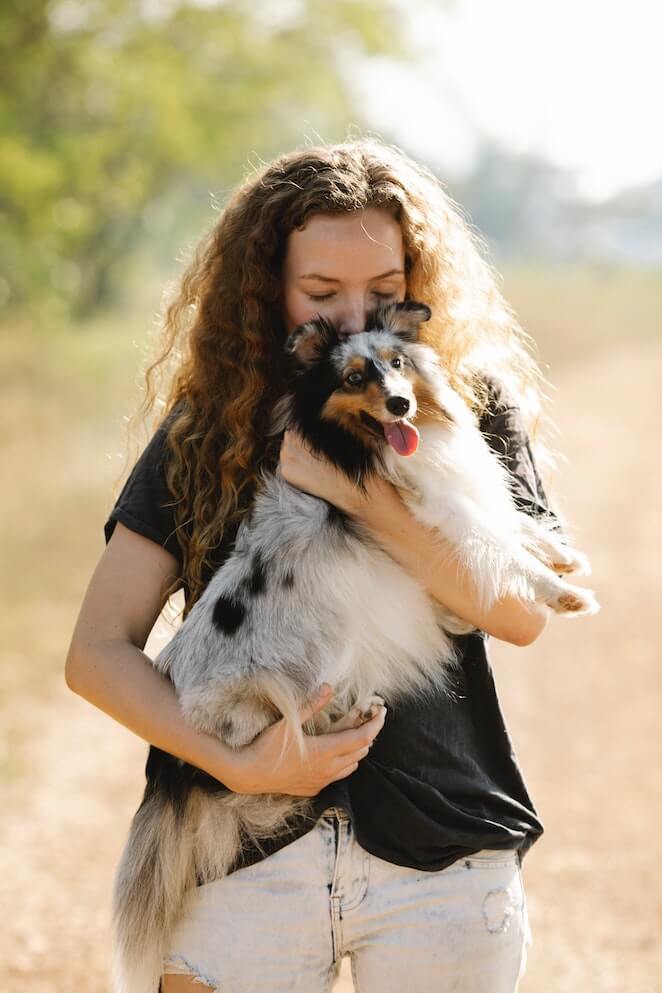
Rehoming a dog is not an easy decision to make. It can be heartbreaking and difficult when you have to say goodbye to your furry companion who has become part of the family.
But in certain circumstances, like when there’s a major change in lifestyle or financial hardship, it may be necessary for pet owners to rehome their dogs for their well-being.
If you’ve come to this conclusion and want to learn how to do so responsibly and humanely, here are some important points that you need to know if you are wondering how to rehome a dog.
What is the Meaning of Rehoming a Dog?
Rehoming a dog is a process of transitioning ownership from one person to another.
It’s an amazing way to give a pup a second chance at finding their forever home.
It is also how many people get to experience the joy of having a furry companion!
What is the Best Age to Rehome a Dog?
The truth is that there really isn’t one definitive “best” age for every dog. Each breed and individual has different needs and preferences when it comes to finding their forever home.
As a rule of thumb, puppies can usually be rehomed around 8-10 weeks old once they’ve had basic puppy classes or socialization with other animals and people.
Adult dogs typically require less training and can often be ready to adopt within one week of arriving in their foster home or shelter.
Reasons for Rehoming a Dog: Is it Good or Bad?

Rehoming a dog doesn’t have to be the end of their story. Here are five reasons why rehoming a dog may be in their best interest:
1. Living Situation Changes:
When an owner’s living situation changes due to relocation, job changes, health issues, or other life events, it can often be difficult to find adequate accommodations for both themselves and their pup.
If their new home does not allow animals or is too small for the dog’s needs, then rehoming them with someone who can provide them with the right environment may be the better option.
2. Lack of Time:
Dogs require regular exercise, playtime, grooming, and training in order to stay healthy and well-behaved, and if these needs are not met then their behavior can suffer.
Rehoming your pup with someone who has more time available may be the best way to keep them happy and healthy.
3. Behavioral Issues:
It’s also important to consider how behavioral issues may make it difficult or even unsafe for some dogs to remain in their current environment.
If your pup has developed any type of destructive behavior such as excessive barking, aggression towards people or other animals, digging, or any other unwanted behavior, then rehoming them may be the best solution.
4. Moving or Relocation:
Sometimes, people have to move and can’t take their fur babies with them.
It’s a hard decision to make, but if the new home isn’t suitable for the dog – whether it be due to space constraints, pet restrictions, travel logistics, or other reasons – rehoming might be necessary.
5. Financial Constraints:
As much as we’d all like to provide our pets with everything they need in life, there are times when financial concerns must come into play.
Counting the visits to the vet, grooming and many such things, the cost of maintaining a dog is much high
If you find yourself in such a situation and can no longer afford to care for your pup due how to rehome a dog properly without putting them at risk of harm or neglect is important here.
How To Rehome A Dog

Rehoming a dog is one of the most difficult, but also rewarding decisions to make.
It’s important to carefully consider all your options and how you can best provide for your furry friend before making any final choices.
Here are the top things to keep in mind to find your pup a safe and loving forever home:
1. Adoption:
If you want to give an abandoned pup another chance at life, adoption is a great option!
Many local animal shelters have an array of adoptable dogs who just need someone to show them love and commitment.
You can bring your dog with you on your visit so they’ll be able to meet their new family in person.
Plus, many shelters will offer deals if you plan on adopting multiple pooches.
2. Private Rehoming:
If you’d rather keep the search for your pup more private, word-of-mouth is a great way to find a potential adopter without having to put them in a shelter setting.
Ask family and friends if they know anyone who would be willing to take your pup in, or post an ad on social media platforms that includes all of their vital information, photos, and how to reach out to you.
Make sure to thoroughly vet any adopters before handing off your furry friend!
3. Rescue Organizations:
There are plenty of dog rescue organizations around the world that have made it their mission to connect abandoned pups with loving forever homes.
These organizations will typically have more resources than a shelter, and they’ll often even provide assistance with transport if necessary.
4. Prepare All Relevant Documents:
Collect all necessary paperwork such as medical records and proof of vaccinations so that the new owners will be well-informed about how to care for your pup.
5. Have a Home Visit:
Before officially rehoming your pup, meet with prospective adopters at their homes to ensure that it is an appropriate environment for the animal.
6. Make an Adoption Agreement:
Draft up an adoption agreement with the new owners that outlines how they will care for your pup. This will provide a legal framework in case anything goes wrong with the adoption.
Do Dogs Get Sad When Rehomed?

When a dog has to be rehomed, it can feel like abandonment. This can cause the dog to feel lonely, confused, and scared.
Dogs do remember their owners for a long time so rehoming can be daunting.
Thankfully, there are ways to make the process smoother.
To start with, try introducing your pup to their potential new home gradually by having them visit before making the final transition.
If this isn’t possible, consider sending familiar items such as toys or bedding along with them to help the transition.
When rehoming a dog, it’s important to stay in contact if possible and send updates on how your pup is doing. This can be a great way to alleviate some of the sadness you both may be feeling.
Finally, make sure that your pup’s new home is suitable for their needs.
They should have plenty of room to run around, access to warm shelter in winter, and most importantly – plenty of love!
With these things in place, you can rest assured knowing that your pup will find happiness in their new home.
Conclusion
Rehoming a dog is never an easy decision, but if it’s clear that they will have a better life somewhere else then it can be one of the best gifts you give your pup.
Just remember to always make sure their new home is suitable and loving before making the transition so that both you and your pup can leave with peace of mind.


GIPHY App Key not set. Please check settings